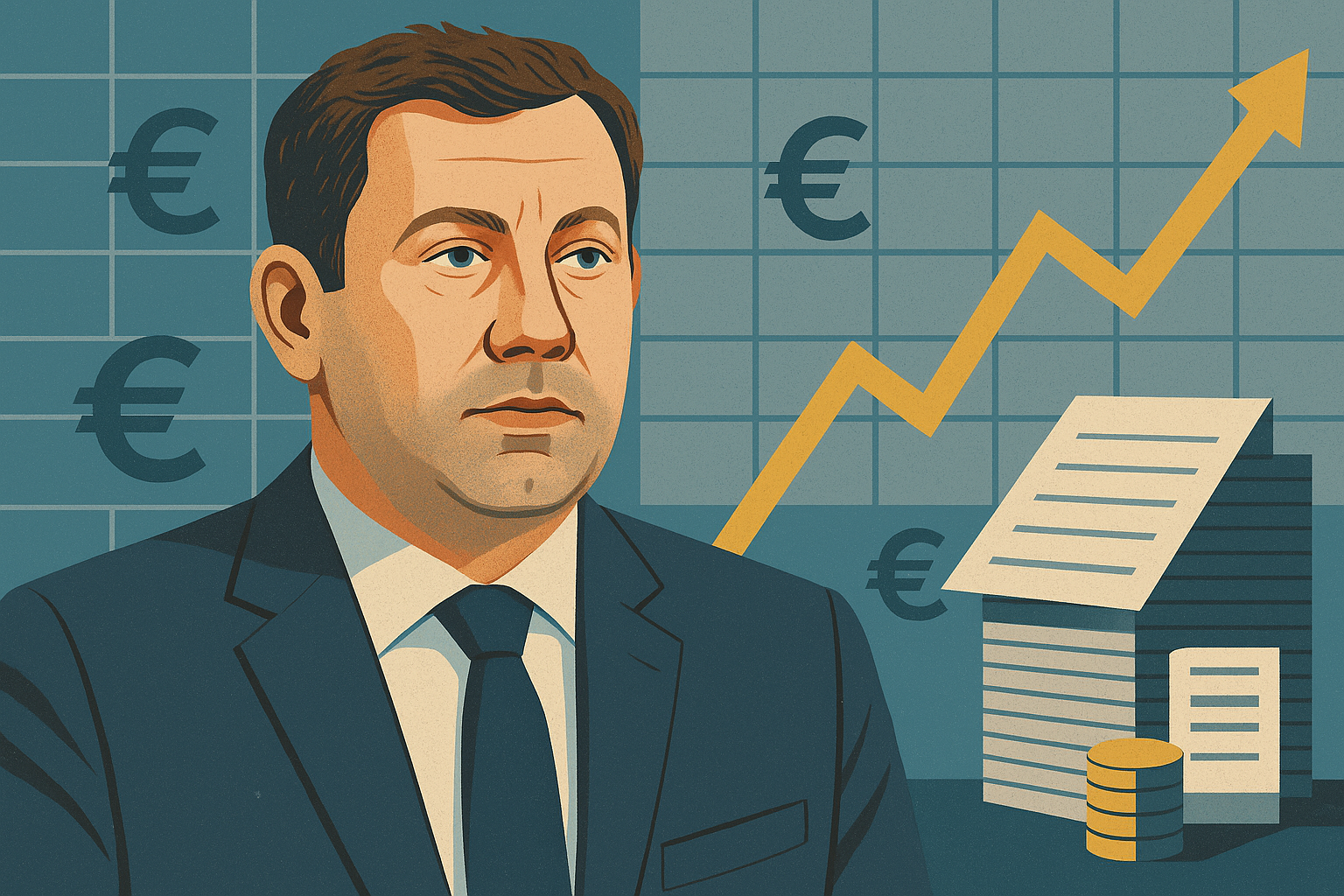Germany has delivered a sharp veto to Brussels’ flagship crisis fund, rejecting the European Commission’s plan for a permanent €395–400 billion “Eurobond-style” rescue tool just as the EU faces rising borrowing costs and looming trade threats.
The rejection came at the G20 finance summit in Durban on 17 July, where German Finance Minister Lars Klingbeil insisted, “We need to resolve EU finances differently than through joint debt — fortunately we are not in such a crisis right now.” Hours later, Chancellor Friedrich Merz doubled down in London: “The EU must make do with the money it has … joint borrowing was an exception, not a model.”
At stake is the Commission’s new 2028–34 Multi-Annual Financial Framework (MFF), unveiled just a day earlier, which proposes a standby facility of up to €395 billion to be activated by the Council in emergencies. The mechanism would be financed by issuing joint EU bonds, echoing previous initiatives such as NGEU and SURE, and is paired with five new “own-resources” revenue streams and a €2 trillion seven-year budget. Supporters, including France, Italy, and ECB officials, argue that pooled borrowing is essential to fund defence, accelerate green technology, and help the EU withstand the impact of a threatened 30 % US tariff on European goods due to take effect from 1 August. However, Germany — joined by the Netherlands, Sweden, and Finland — maintains the bloc is “not in a COVID-type emergency” and calls for a leaner budget without permanent debt mutualisation.
The Commission’s plan faces a structural roadblock: any new joint borrowing must be approved unanimously by all 27 member states as well as the European Parliament. Berlin’s opposition effectively renders “Eurobonds 2.0” a non-starter for now, setting up a protracted and politically charged two-year budget negotiation. The European Parliament’s centre-right EPP group has also warned against permanent debt mutualisation and called for greater use of existing mechanisms, such as the Emissions Trading System (ETS) and Carbon Border Adjustment Mechanism (CBAM), instead.
The market backdrop further complicates matters. EU 10-year bond yields have risen to around 3.15 %, up roughly 35 basis points year-on-year, and continue to trade 30–40 basis points above German Bunds — limiting their appeal as a pan-European “safe asset.” The Commission must issue €70 billion in new bonds in the second half of 2025, before any crisis tool is launched, while nearly €650 billion in existing EU debt remains outstanding. From 2028, principal repayments on NGEU grants alone will add €15–18 billion annually to the budget. Meanwhile, Brussels estimates that a 30 % US tariff could affect €420 billion of annual EU exports, potentially reducing GDP by 0.4 percentage points if fully implemented.
Formal budget negotiations are set to begin in Q4 2025 under the ECOFIN Council, with the unanimity rule expected to put smaller northern states in a decisive position. Should joint borrowing remain blocked, Brussels may be forced to consider “plan B” alternatives — such as increasing revenues from the ETS or launching targeted defence bonds via the European Investment Bank.
For Berlin, joint EU debt was so 2020; for Brussels, the battle to secure fresh funds may now mean “passing the hat” the old-fashioned way.
Source Links:
- Reuters: EU needs to solve problems without joint debt, German minister says
- POLITICO: Merz rules out company tax and joint borrowing in EU budget
- El País: Brussels proposes €395bn crisis mechanism
- Bruegel: EU debt stock ≈ €650bn
- YCharts: 10-year eurozone bond yield
- EU-Today: Klingbeil remarks & member-state split
Image Description: Landscape illustration: Clean geometric composition showing silhouetted finance ministers in front of an EU flag, stylised Eurobonds documents and a rising yield chart. Slate blue dominates, with mustard yellow accents and turquoise highlights. Editorial, not literal; no text or labels.


